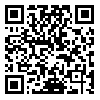Volume 1, Issue 2 (July 2024)
JCALS 2024, 1(2): 225-241 |
Back to browse issues page
Download citation:
BibTeX | RIS | EndNote | Medlars | ProCite | Reference Manager | RefWorks
Send citation to:



BibTeX | RIS | EndNote | Medlars | ProCite | Reference Manager | RefWorks
Send citation to:
Rajabi M, Farshadi F. Critical Perspectives on Political Discourse of 2016 U.S. Presidential Debates: A Systemic Functional Linguistics Reading. JCALS 2024; 1 (2) : 12
URL: http://cals.gonbad.ac.ir/article-1-53-en.html
URL: http://cals.gonbad.ac.ir/article-1-53-en.html
Mojtaba Rajabi (Corresponding Author), Assistant Professor, Department of Foreign Languages, Faculty of Humanities & Physical Education, Gonbad Kavous University (GKU), Gonbad Kavous, Iran. Email: rajabi.m57@gmail.com
Fateme Farshadi, M.A in ELT, Department of English Language Teaching, Gonbad Kavoos Branch, Islamic Azad University, Gonbad Kavoos.
Fateme Farshadi, M.A in ELT, Department of English Language Teaching, Gonbad Kavoos Branch, Islamic Azad University, Gonbad Kavoos.
Abstract: (1061 Views)
Since the 2016 U.S. presidential election, the political discourse between candidates Hillary Clinton and Donald Trump has garnered significant interest in applied linguistics, particularly within Critical Discourse Analysis. Despite this, the debates between these two nominees still warrant further investigation. This study, grounded in Halliday’s Systemic Functional Linguistics (SFL), explores how interpersonal metafunctions—specifically Mood, Modality, and Affect—are represented in their debate discourse. Utilizing qualitative analysis of archived presidential debate data, the research reveals distinct patterns in how both candidates employed these linguistic features to convey their perspectives and persuade voters. The findings demonstrate that Clinton and Trump used various modes, modals, and affective expressions to construct their arguments and influence public opinion. This study not only contributes to a deeper understanding of political discourse but also offers pedagogical insights for language teachers and curriculum developers, emphasizing the importance of these linguistic elements in English language education.
Article number: 12
Keywords: Systemic Functional Linguistics (SFL), Critical Discourse Analysis (CDA), Political Discourse, Mood, Modality, Affect
Type of Study: Research |
Subject:
Special
Received: 2024/05/1 | Accepted: 2024/06/20 | Published: 2024/07/1
Received: 2024/05/1 | Accepted: 2024/06/20 | Published: 2024/07/1
Send email to the article author
| Rights and permissions | |
 |
This work is licensed under a Creative Commons Attribution-NonCommercial 4.0 International License. |







